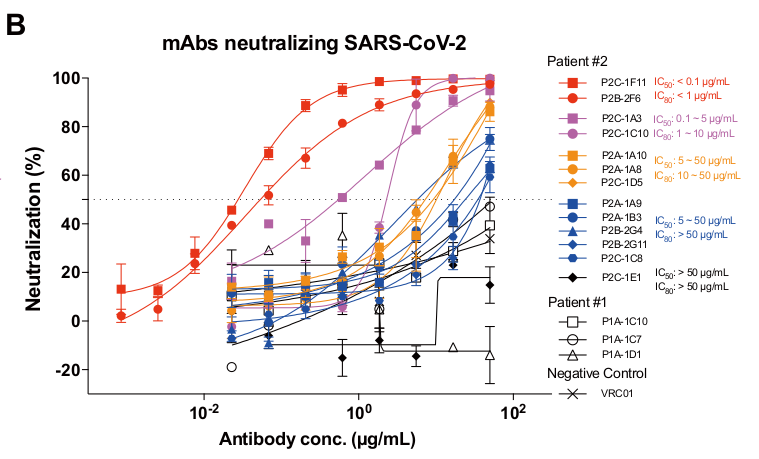Antibodies on command?
(On this page in Dutch I post daily bits of realistic but hopeful Corona news. Here is a somehat rough translation of an article on antibodies I posted there, because I think it might also be useful for people that don’t speak Dutch).
Friday March 27: antibodies on demand?
Those who have read the previous posts will recall that antibodies from people who have already been cured can help us to be vaccinated temporarily, or even heal us faster from disease. Unfortunately, this is not a solution for everyone: not that many people have recovered from COVID-19 already, nor can we remove “all” antibodies from a donor.
Of course it would be great if we could clone well-working antibodies in a factory - there would then be enough for everyone! I always thought this was beyond impossible, but this morning an exciting new paper from China was published, “Potent human neutralizing antibodies elicited by SARS-CoV-2 infection”.
As I noted on Twitter, if someone told me this article had come from 2025 by time machine I would not have been be surprised.
First some details - what are antibodies and how do they work? An antibody fits an “antigen”. The definition of an antigen is “the thing an antibody fits on.” Thanks. Just to make things more interesting, “gen” has nothing to do with genes here.
Specifically, the spikes on the coronavirus are typical antigens. Things that our immune system recognizes as “the enemy”. Over time (it can take up to a week) the immune system succeeds in making antibodies that fit exactly on that spike (and other parts of the virus, by the way).
Once the antibody has “covered” the spike, several things can happen. Either the virus simply “no longer works” because the spike is no longer functional. It is also possible that the antibody, once attached, attracts further helpers that destroy or immobilize the virus.
Stated this way, antibodies seem quite magical, a sort of robot hunting for spikes. But it turns out, something like this happens almost automatically. This is one of the very anti-intuitive things about molecular biology.
Imagine you have a box with a million marbles. Two of those marbles have a built-in magnet, so those two marbles would stick together if they ran into each other. One represents an antigen, the other an antibody. We put the million marbles in a container and shake well. Our feeling now says that in this “concentration” (or “titer” as virologists like to say), the magnetic marbles will never find each other, even if we shake for days. And that is true for the marbles. 1 in a million is simply not enough.
However, molecules in our body are not marbles. They move in our blood at 1540 meters per second, at least as long as they don’t collide with other molecules. And they do collide at an incredible clip. And every collision can be an encounter between an antigen and an antibody.
Our intuition is made for centimeter-sized marbles and not for 20 nanometer molecules (millionths of a millimeter). So even at a concentration of 1 in 10 million, antibody and antigen meet quickly enough.
That’s all great news, of course, but how do we get those antibodies? Erasmus MC and Utrecht University already had one on the shelf with the exciting name “47D11”.
This morning’s paper took a different approach. They looked at the blood of 8 healed patients. They then brought that blood into contact with recreated parts of COVID-19, including the “spike”. Then they looked at what stuck to those artificially built parts.
From this they were able to isolate more than 200 different antibodies, which they were also able to clone. Then, of all those antibodies, it was examined how well they could neutralize the virus:

It can be seen here that already at a concentration of 100 nanograms / milliliter, less than 1 in 10 million, P2C-1F11 was able to block half of the infectivity of the virus.
As if it were not enough, the paper then continues with a complete genetic analysis of all those antibodies and how they have evolved over time. They also determined how specific the antibodies are - do they bind to other things we don’t want them to bind to? That does not seem to be the case.
Now, the article says they were able to clone and produce these antibodies. That’s great for research, but can you also inject them into people? Is it safe? Can you make enough of them at a high enough pace? Will they help cure people?
I don’t know all that. But if you asked me a month ago if this kind of research was possible I would have said “yes in Star Trek it is.” But apparently it is also possible here.
I will keep you informed whether this development will help us at this stage or whether it is one that will be ready in time for “SARSv3”.
In the meantime, I wish you a good weekend, with sufficient physical distancing. I’ll be back on Monday with a new update, unless something really exciting happens over the weekend.
Until then!
